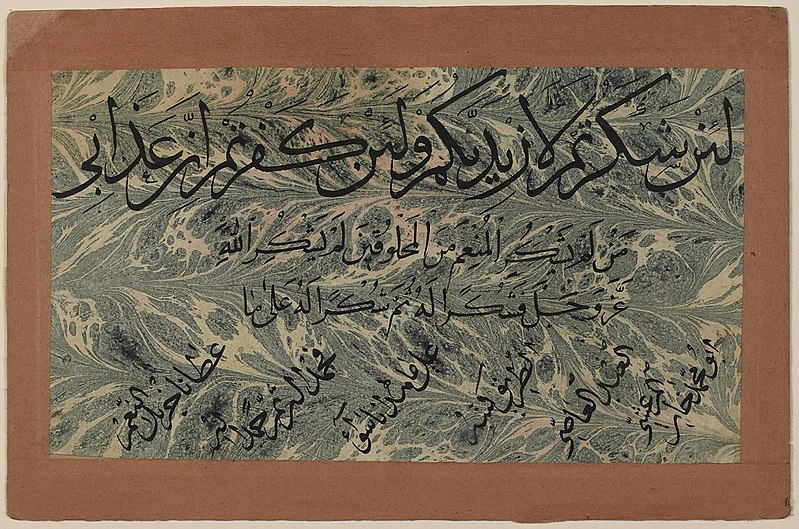Fichier:Quran 14.jpg

Taille de cet aperçu : 800 × 529 pixels. Autres résolutions : 320 × 212 pixels | 640 × 423 pixels | 1 024 × 678 pixels | 1 280 × 847 pixels | 2 932 × 1 940 pixels.
Fichier d’origine (2 932 × 1 940 pixels, taille du fichier : 2,28 Mio, type MIME : image/jpeg)
Historique du fichier
Cliquer sur une date et heure pour voir le fichier tel qu'il était à ce moment-là.
| Date et heure | Vignette | Dimensions | Utilisateur | Commentaire | |
|---|---|---|---|---|---|
| actuel | 25 juin 2009 à 02:51 |  | 2 932 × 1 940 (2,28 Mio) | Calliopejen1 | {{Information |Description=Dimensions of Written Surface: 20 (w) x 11.5 (h) cm Script: thuluth, Persian naskh, and tawqi' This fragmentary calligraphic panel includes a verse from the Qur'an (14:7) and praises to God executed in thuluth, Persian naskh, |
Utilisation du fichier
Les 2 pages suivantes utilisent ce fichier :
Usage global du fichier
Les autres wikis suivants utilisent ce fichier :
- Utilisation sur af.wikipedia.org
- Utilisation sur as.wikipedia.org
- Utilisation sur bg.wikipedia.org
- Utilisation sur bs.wikipedia.org
- Utilisation sur de.wikipedia.org
- Utilisation sur en.wikipedia.org
- Utilisation sur eo.wikipedia.org
- Utilisation sur hu.wikipedia.org
- Utilisation sur kk.wikipedia.org
- Utilisation sur lt.wikipedia.org
- Utilisation sur nl.wikipedia.org
- Utilisation sur ru.wikipedia.org
- Utilisation sur sv.wikipedia.org
- Utilisation sur vi.wikipedia.org
